
The Kewanee Boiler Corporation made boilers from 1868, when they were founded as a steam cooker manufacturing company in Kewanee, Illinois by Valerius Anderson, until 2002 when Burnham Boiler decided to quit using the name. Kewanee Boiler was formed, as a "spin-off" of the Walworth Valve Company, also in Kewanee. In 1929, Kewanee was bought out by the newly-merged American-Standard Company (in 1929 American Radiator and Standard Sanitation merged.) E.E. Baker, who formed the acutal Kewanee Boiler Corporation in the 1890s, also died in 1929. The boilers seen on this page include a 1968 American-Standard/Kewanee Boiler that is rated to produce 15 PSI (low-pressure) steam at 113 horsepower (BHP) and a 1974 (after American-Standard sold Kewanee in 1972 to a group of individual owners) Kewanee Boiler rated to produce hot water at 25 BHP. Also some pictures include the various fan coils and other boiler-related equipment found around the two buildings the two boilers are located in. See my article in the school newspaper (the "Pirate Press") regarding the 1968 American-Standard/Kewanee boiler. The 1968 American-Standard Kewanee Boiler is no longer in operation due to efficiency and being outdated, but the 1974 orange Kewanee boiler is still heating the building it is located in, and is the only source of heat for that building.

Above: The 1968 American-Standard/Kewanee Boiler. [November 5, 2013]
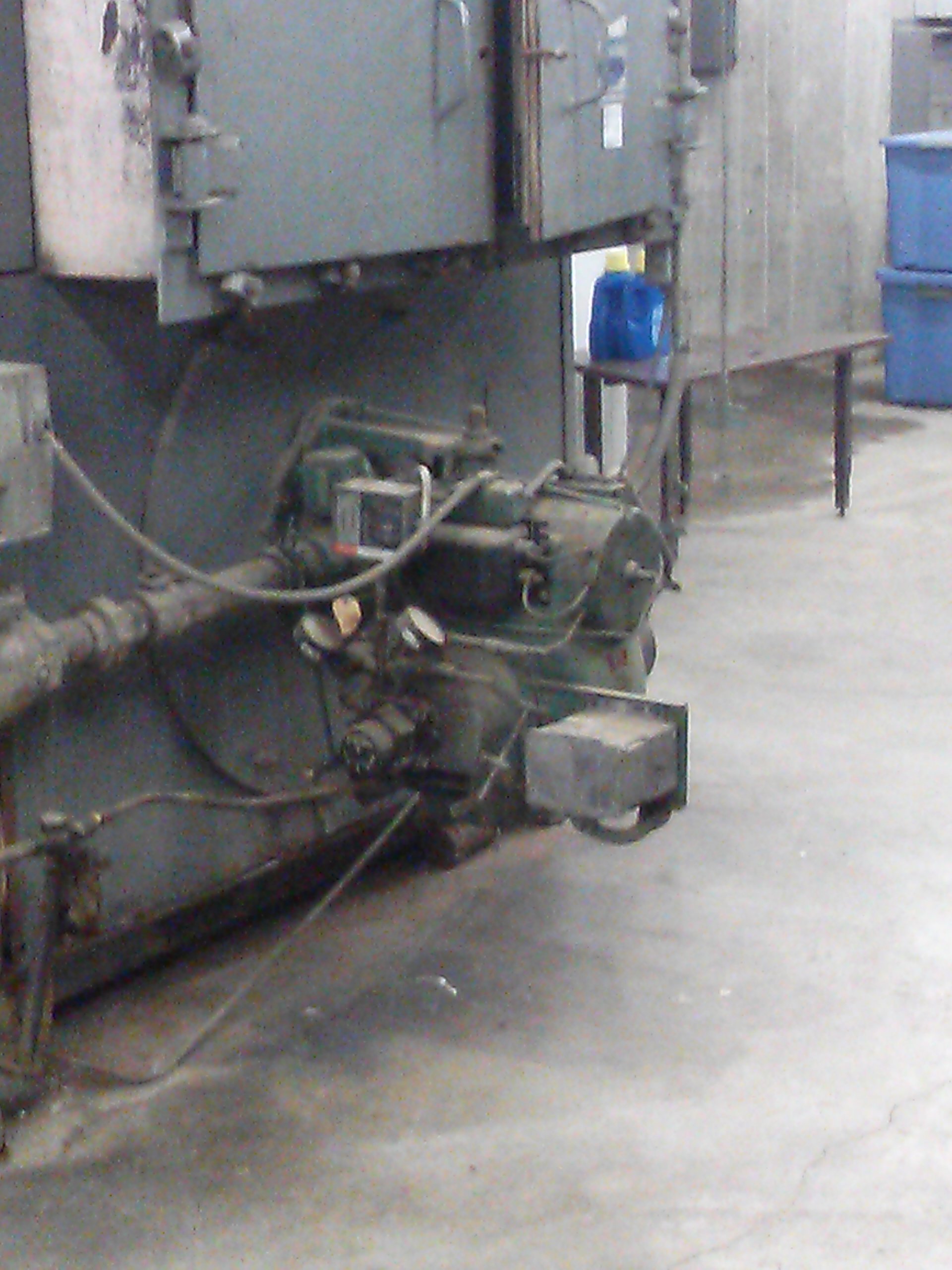
Above: The Ray Burner that powered the boiler. I'm not sure if this is a strictly a Natural Gas model or if it is a "Combination" model as there seems to be gas and oil pipes leading to the boiler, and the ignition control has a switch for both Natural Gas and Oil operation. Possibly a hybrid/combination model? [November 4, 2013]
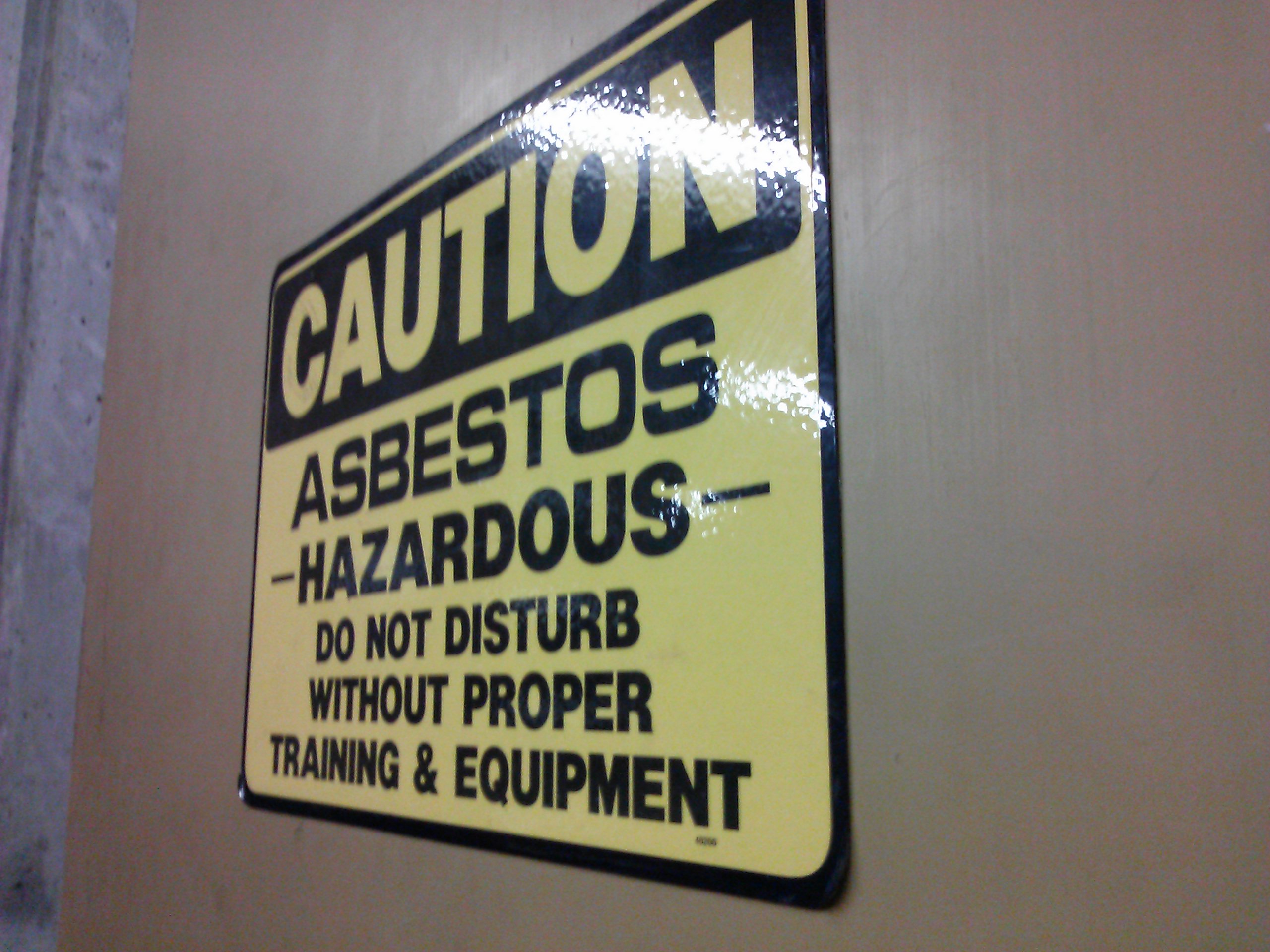
Above: The 1968 American-Standard/Kewanee boiler is one that has asbestos insulation inside of it. The building it is located in was built in 1968 when asbestos was used as a insulating material and we did not know the dangers of air-cell insulation. [November 4, 2013]
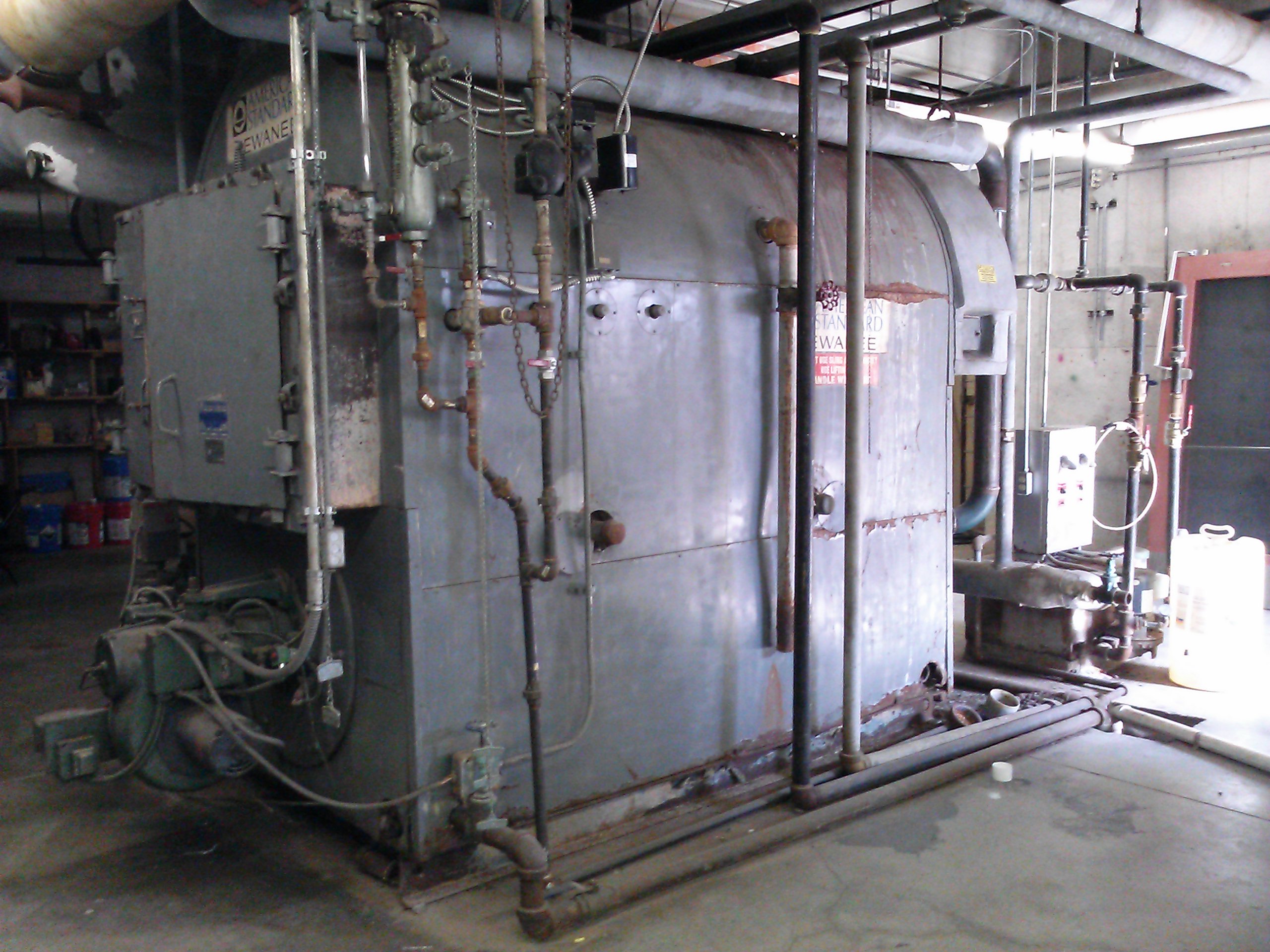
Above: The right side of the boiler. Here you can see majority of the steam and operational valves, such as the low-water cutouts, steam blowout, and water guage. [November 29, 2013]
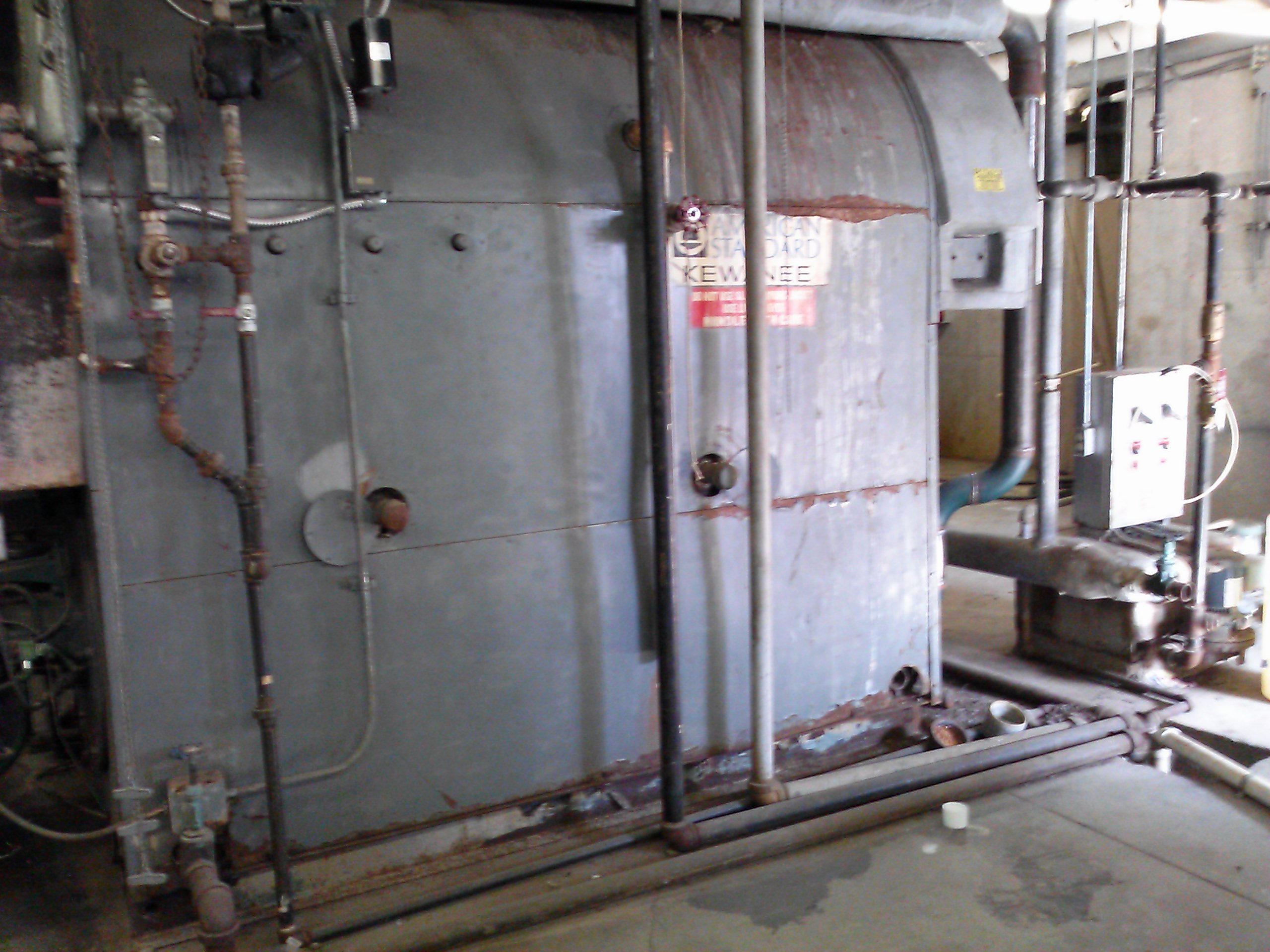
Above: The same side of the boiler. A closer up of some of the safety devices (upper left) and the water pump system (middle to lower right.) [November 29, 2013]
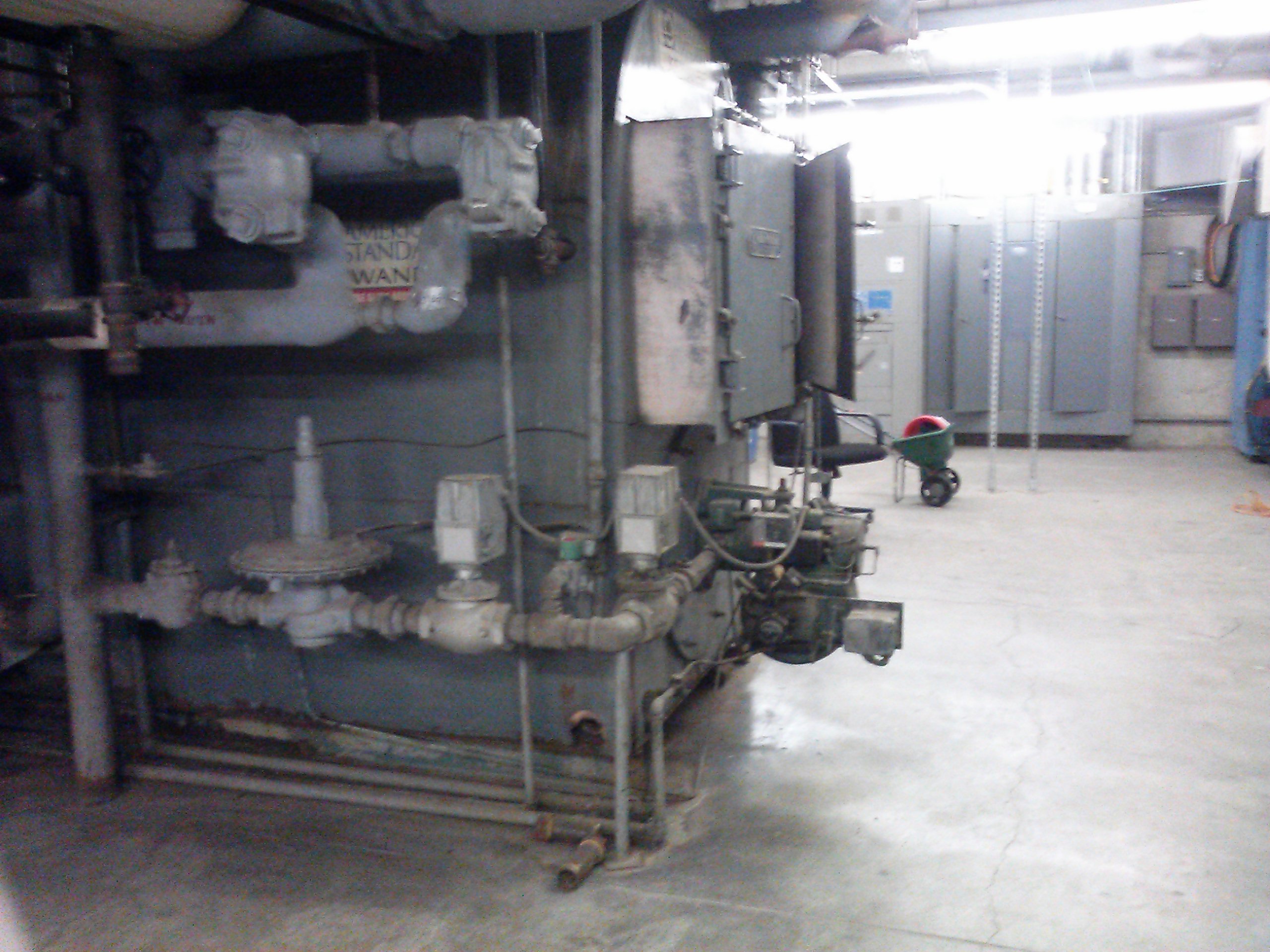
Above: A close up of the gas-train (middle section of the picture.) From right-to-left gas train devices: gas pressure regulator, gas valve (stage 1?), pilot (green box with red button), and second gas valve. The large green blower is for the gas jet. I believe that at one time there was a companion boiler that sat next to this boiler as there is a capped gas pipe and flue that may have lead to a second boiler. [December 6, 2013]
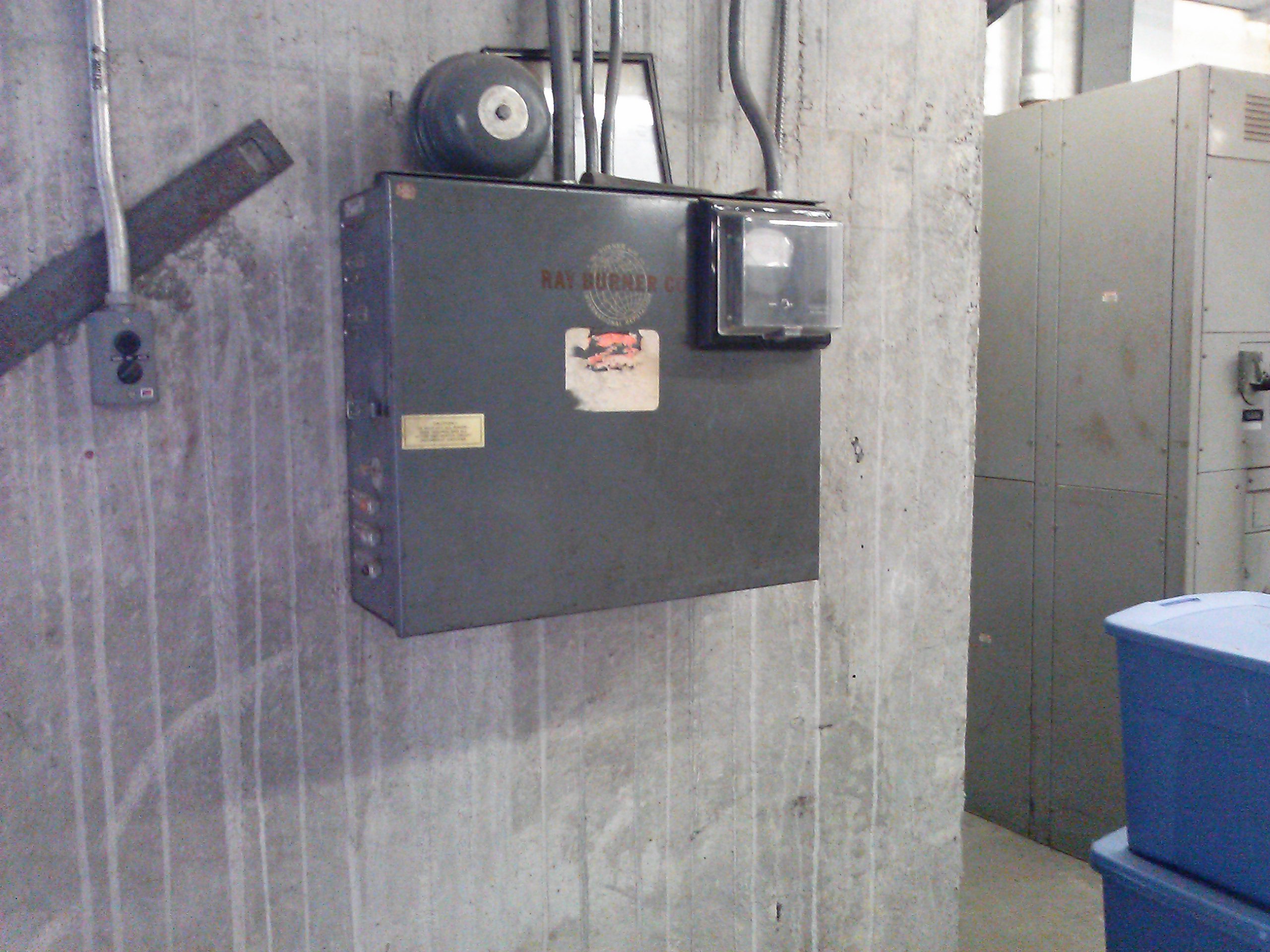
Above: Ignition Control system for the boiler. It is matched to the burner - they're both made by Ray Burner Company. [December 6, 2013]
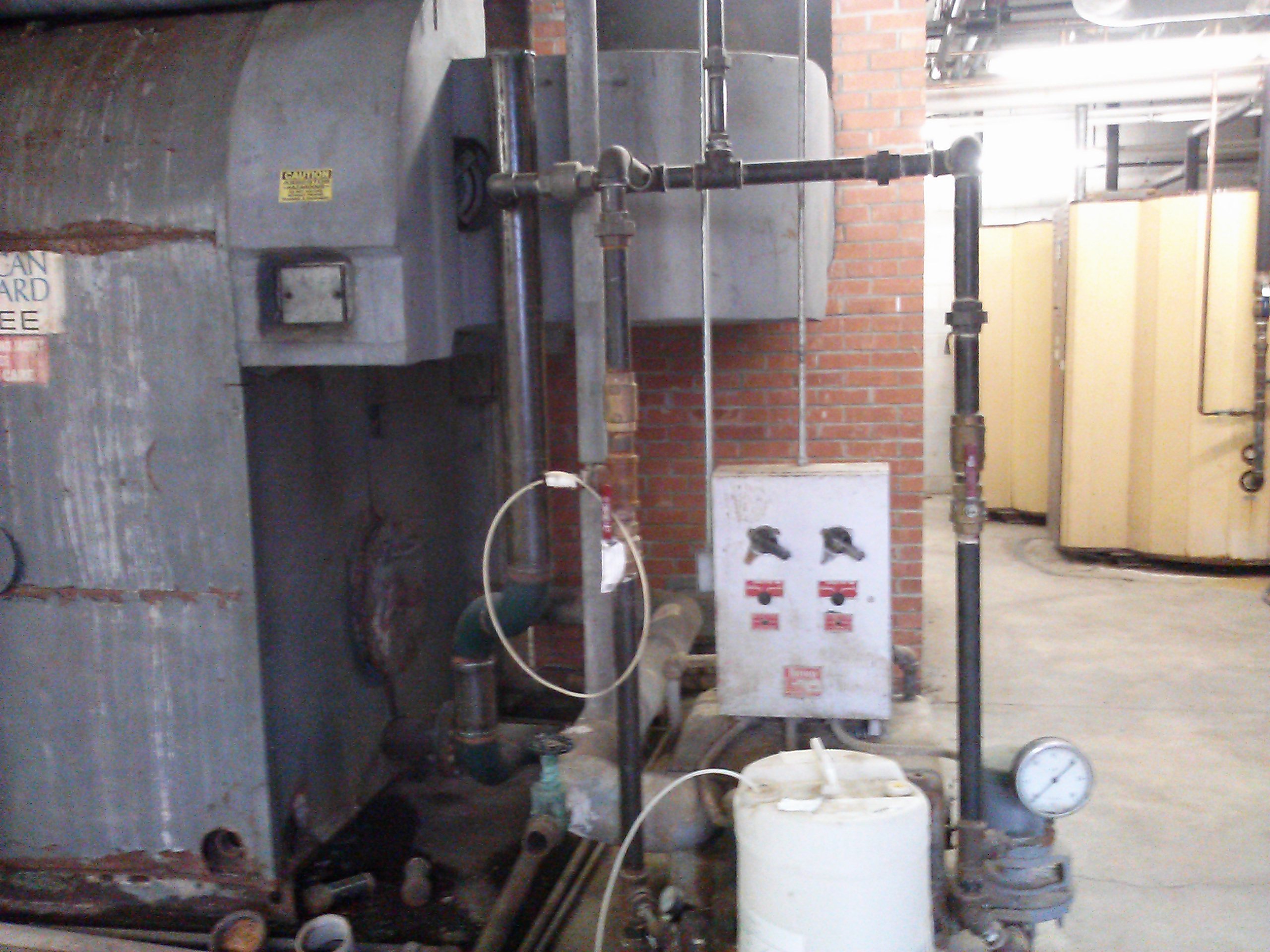
Above: Water pump control (box with two switches on it) and water pump system (motor is partially hidden by the box), and the back side of the boiler. Notice the huge flue leading to the chimney (the brick column in the rear.) The large two yellow and brown machines in the background are the huge PVI Electric Water Heaters that heat the water for the building. [December 6, 2013]
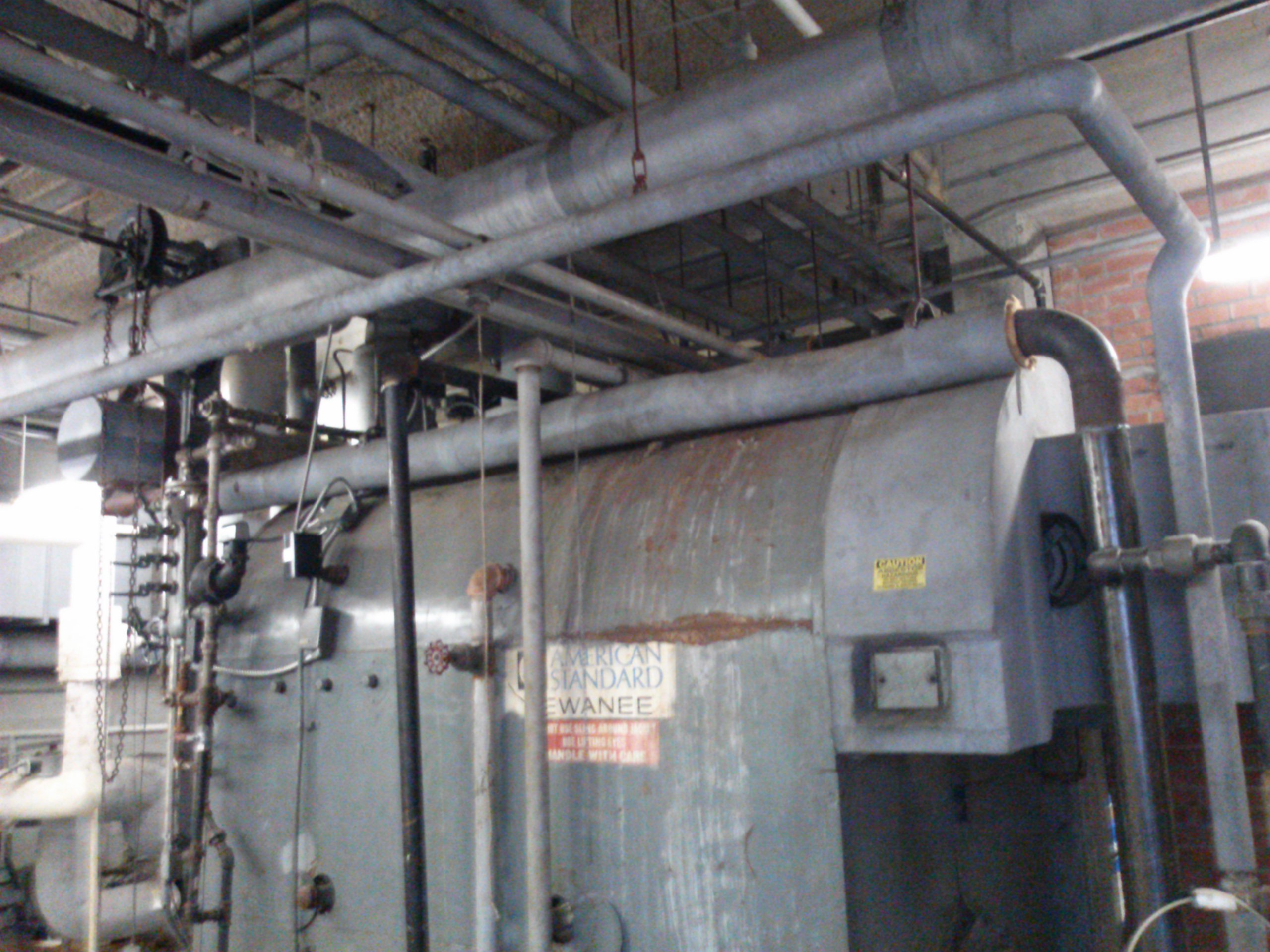
Above: A good picture of all of the pipes running to and from the boiler, including steam pipes, gas pipes, oil pipes, and water pipes. You can also see parts of the steam safety system on this boiler in the middle-to-lower left side of this picture. [December 6, 2013]
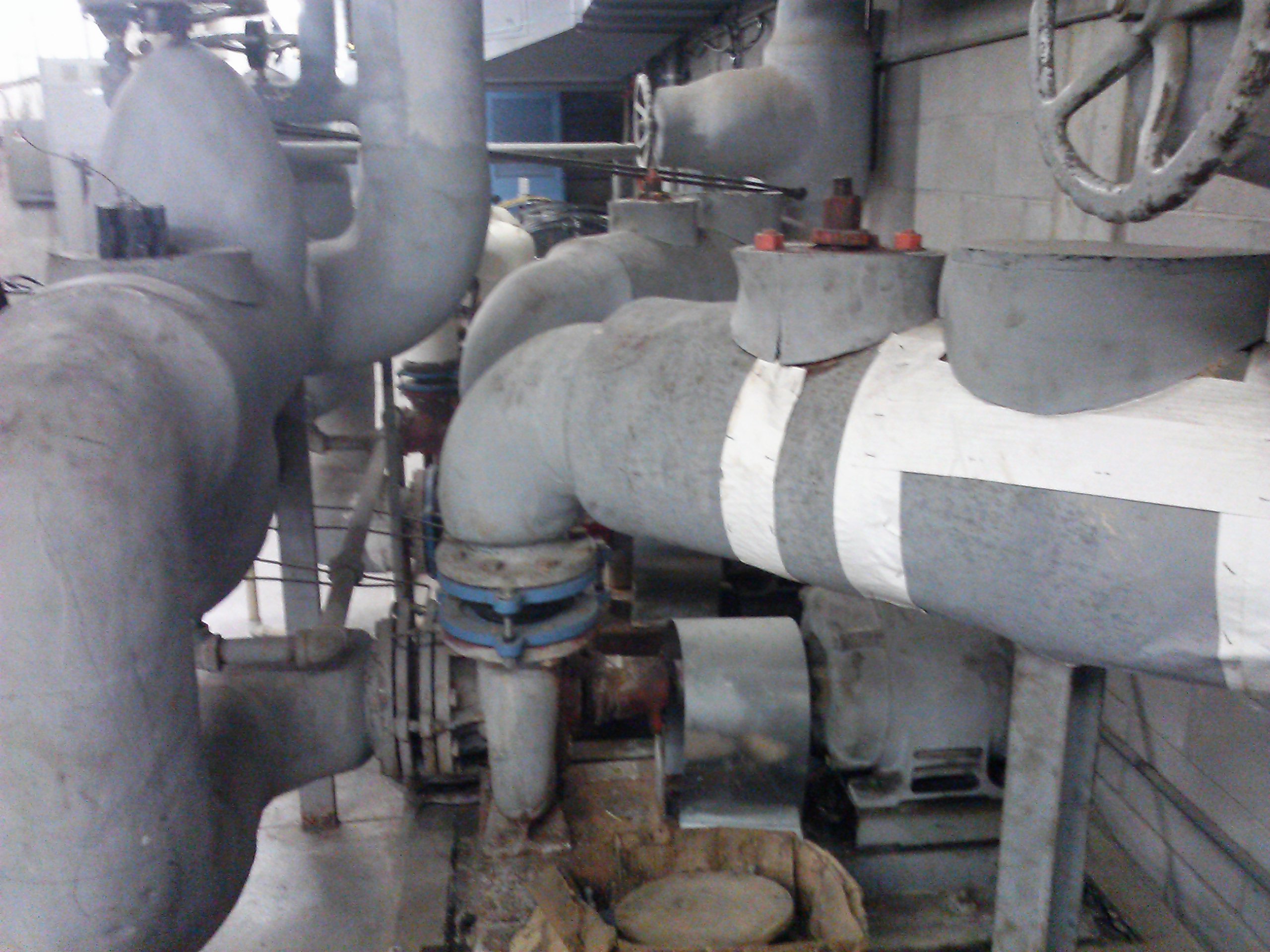
Above: Steam pipes and valves located in front of the boiler. [December 6, 2013]
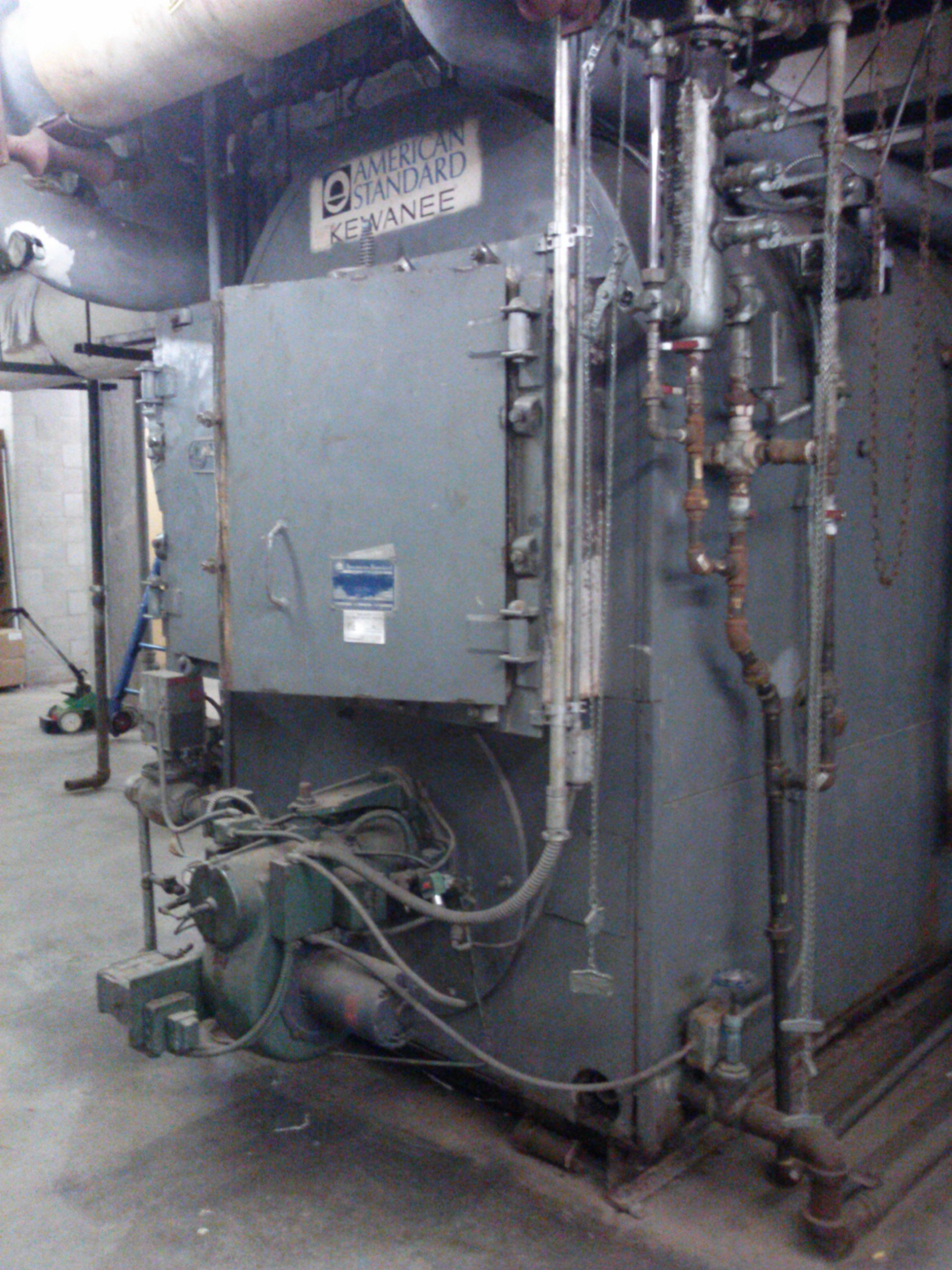
Above: The front of the boiler. You can get a close-up idea of the steam safety devices and the gas jet. I wonder what's inside those doors... [December 9, 2013]
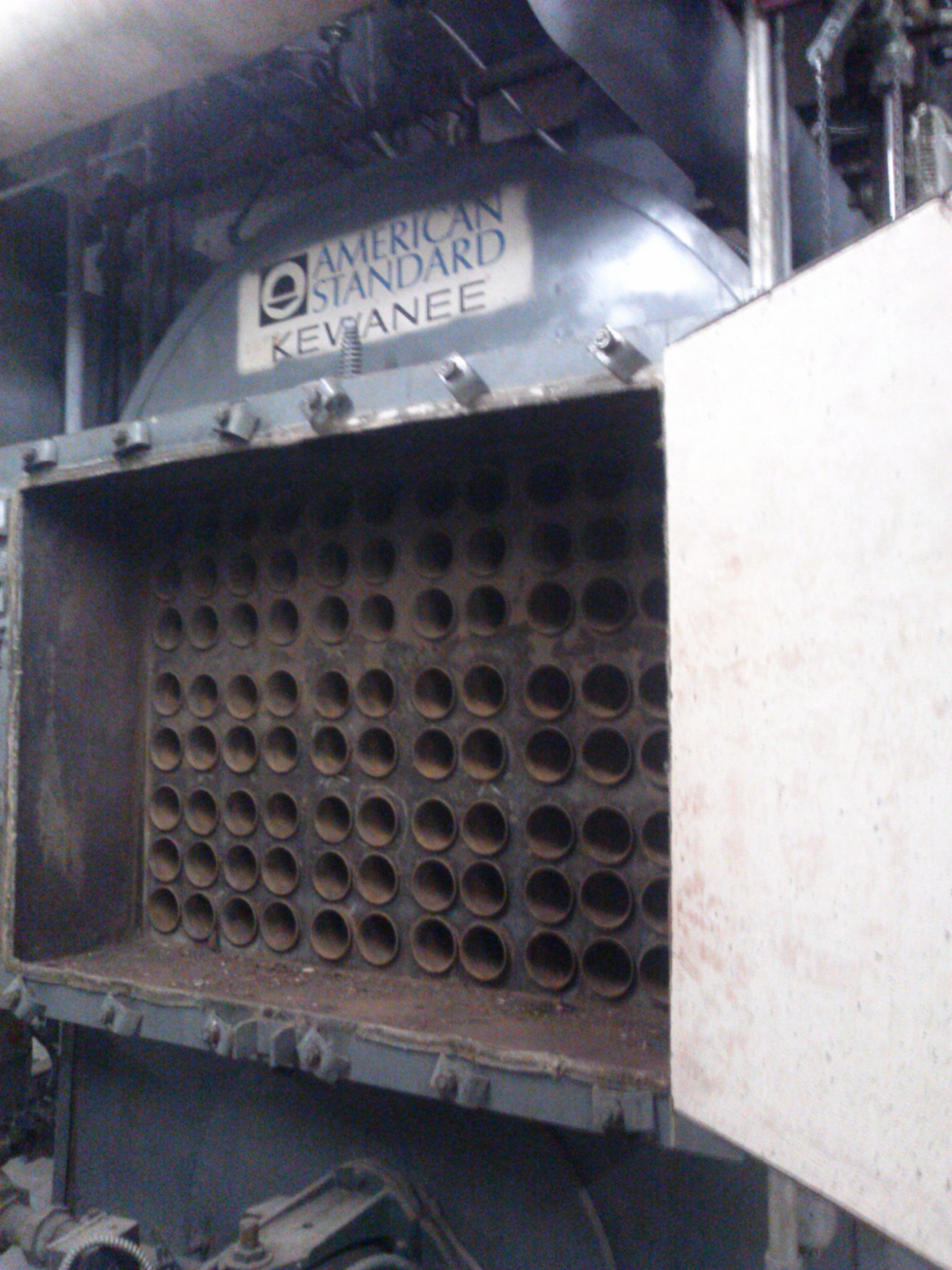
Above: Behind the doors - the tubes. When the boiler is operating, the hot flue gasses pass through these tubes to heat the water. The tubes act as "heat exchangers." [February 11, 2014]

Define: A good idea of the steam safety devices (center-top) and the right side of the gas jet (center.) [January 20, 2014]
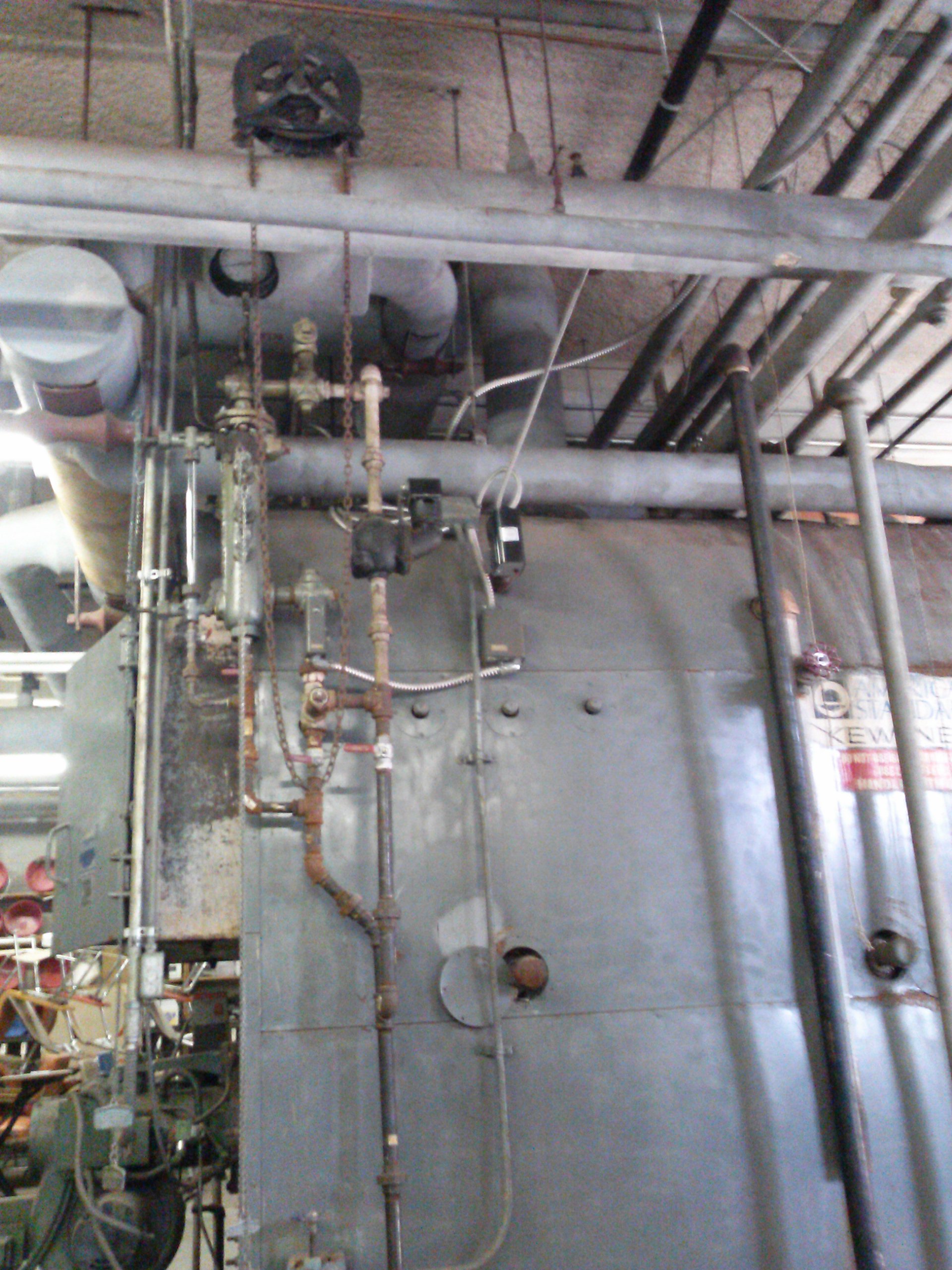
Above: An even closer picture of the safety devices, such as the low-water cut off and the steam blow-off system. [December 31, 2013]
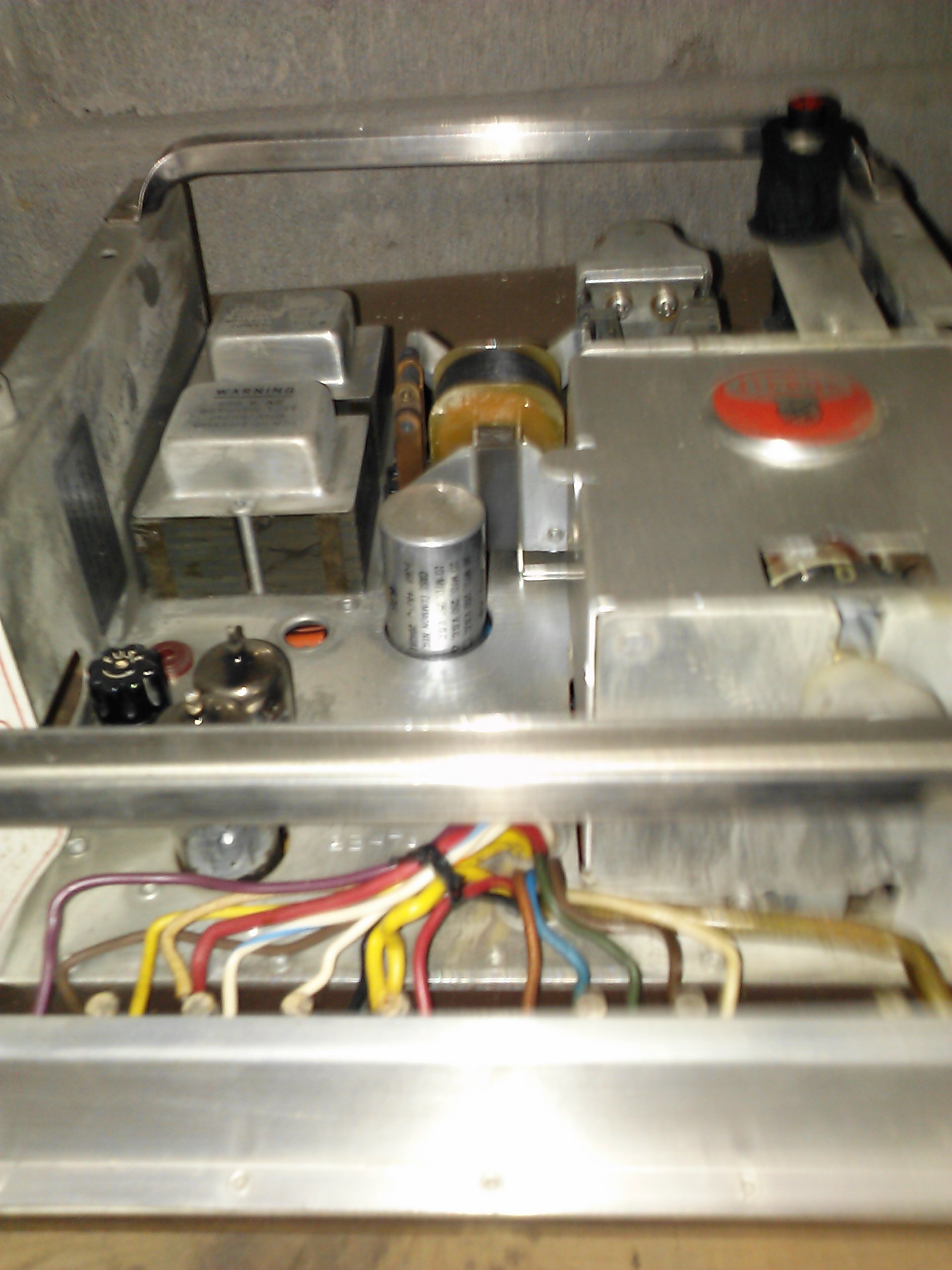
Above: The Fire-Eye system for the boiler. This was located on a counter near the boiler, possibly been sitting there ever since the boiler was decomissioned (or perhaps longer if it is a spare unit.) This was how they controlled the ignition timing of the boiler before micro-processors and more advanced ignition systems were created. [February 17, 2014]
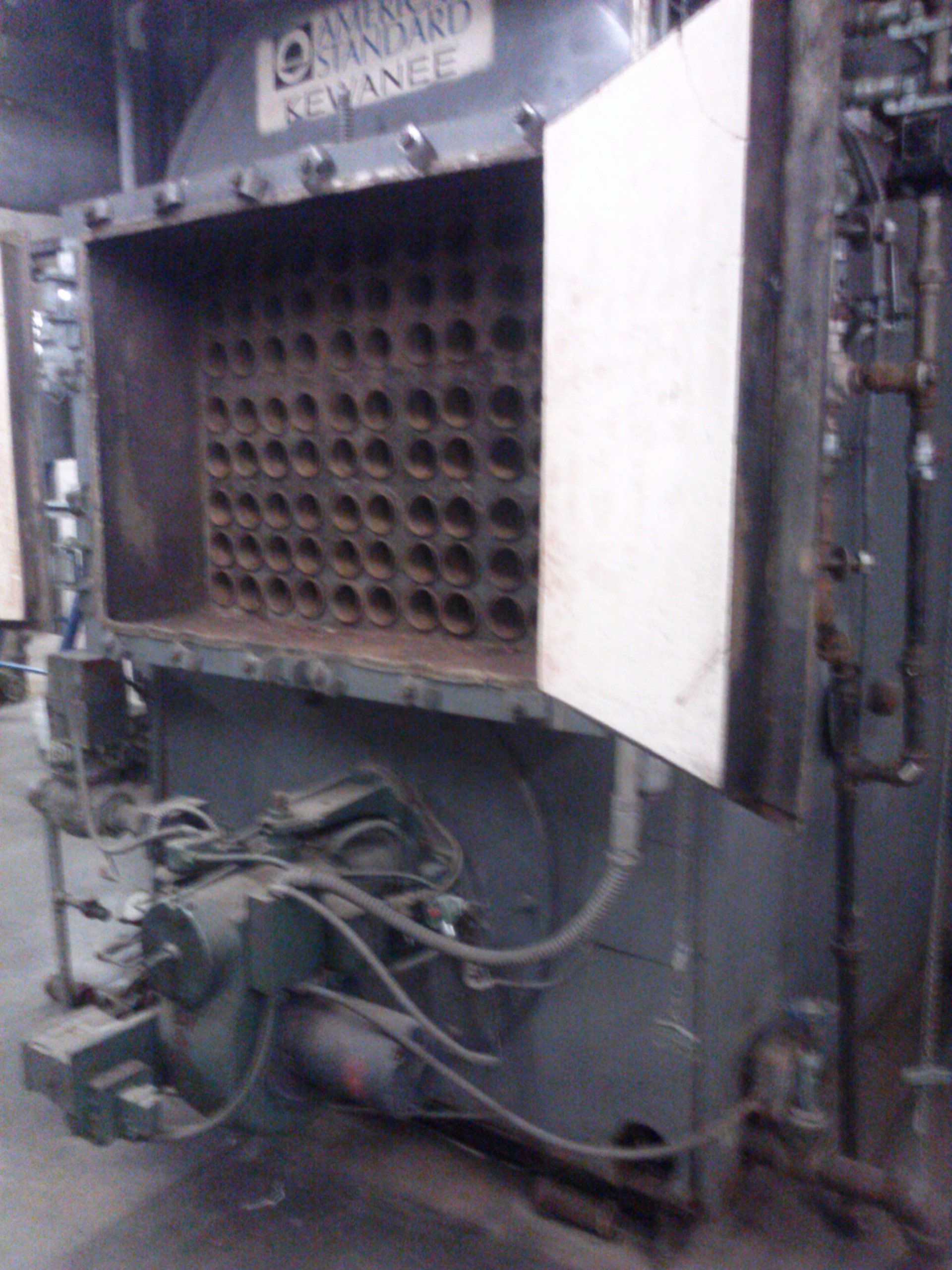
February 11, 2014
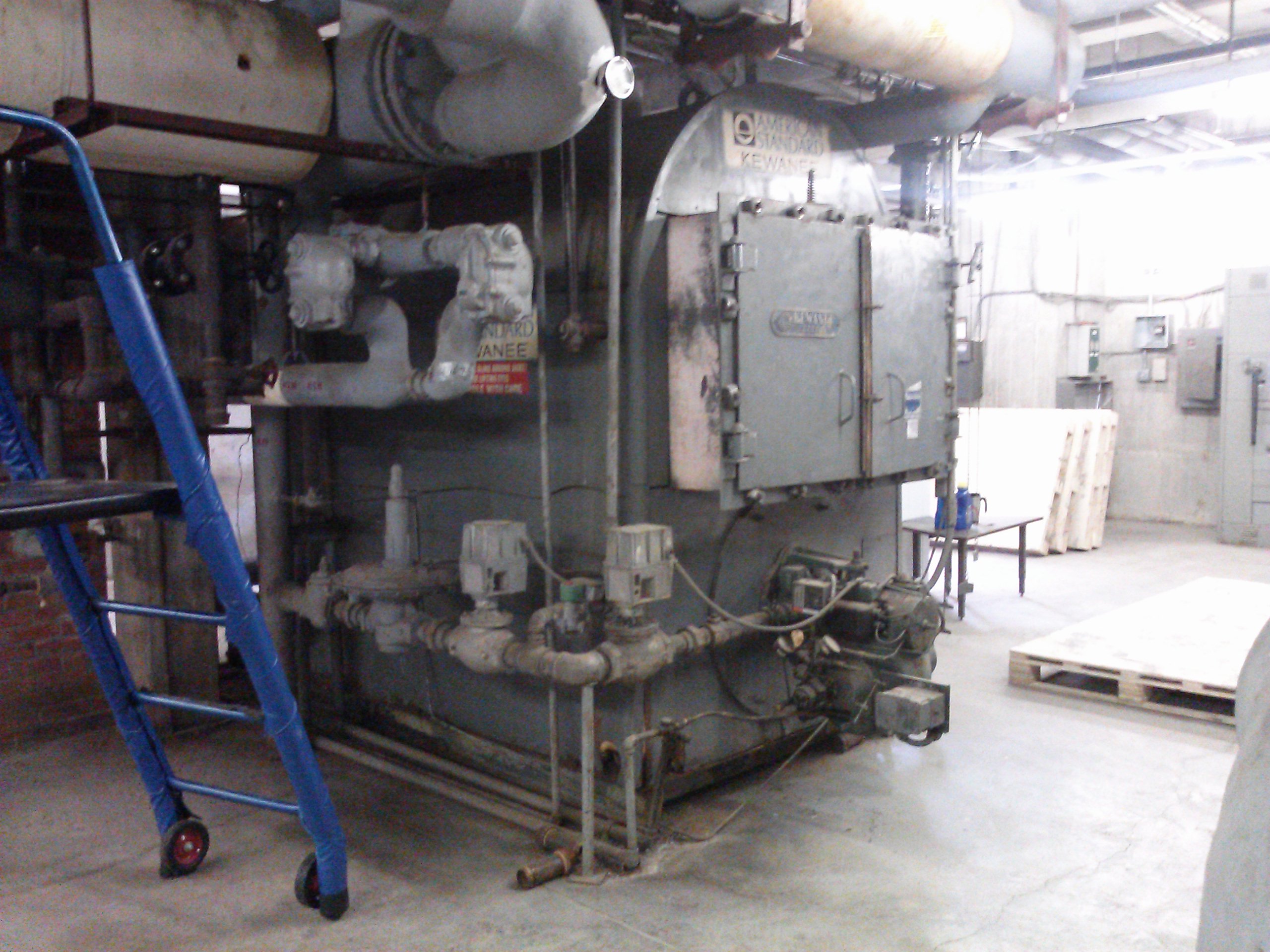
June 16, 2014
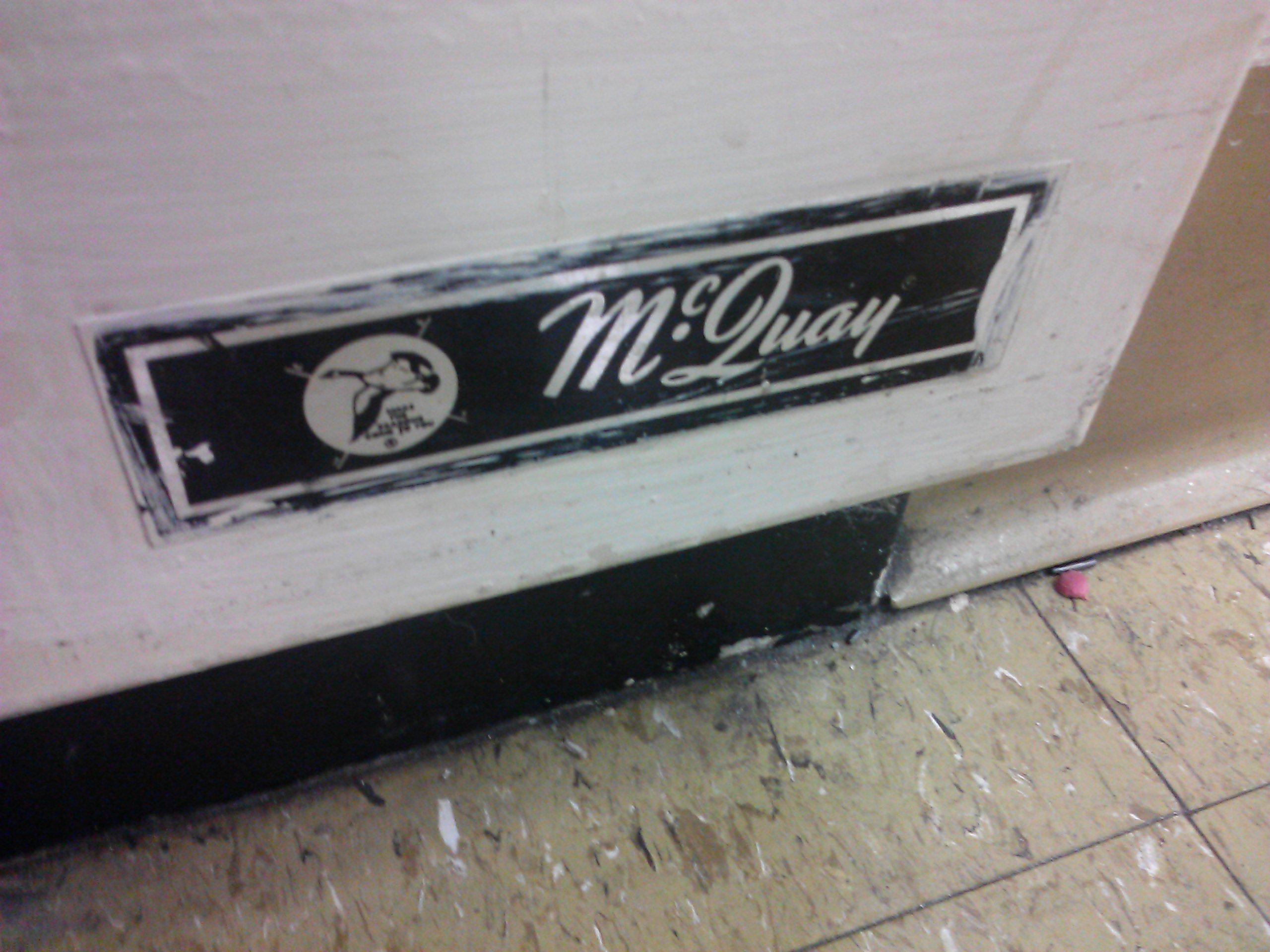
January 9, 2014
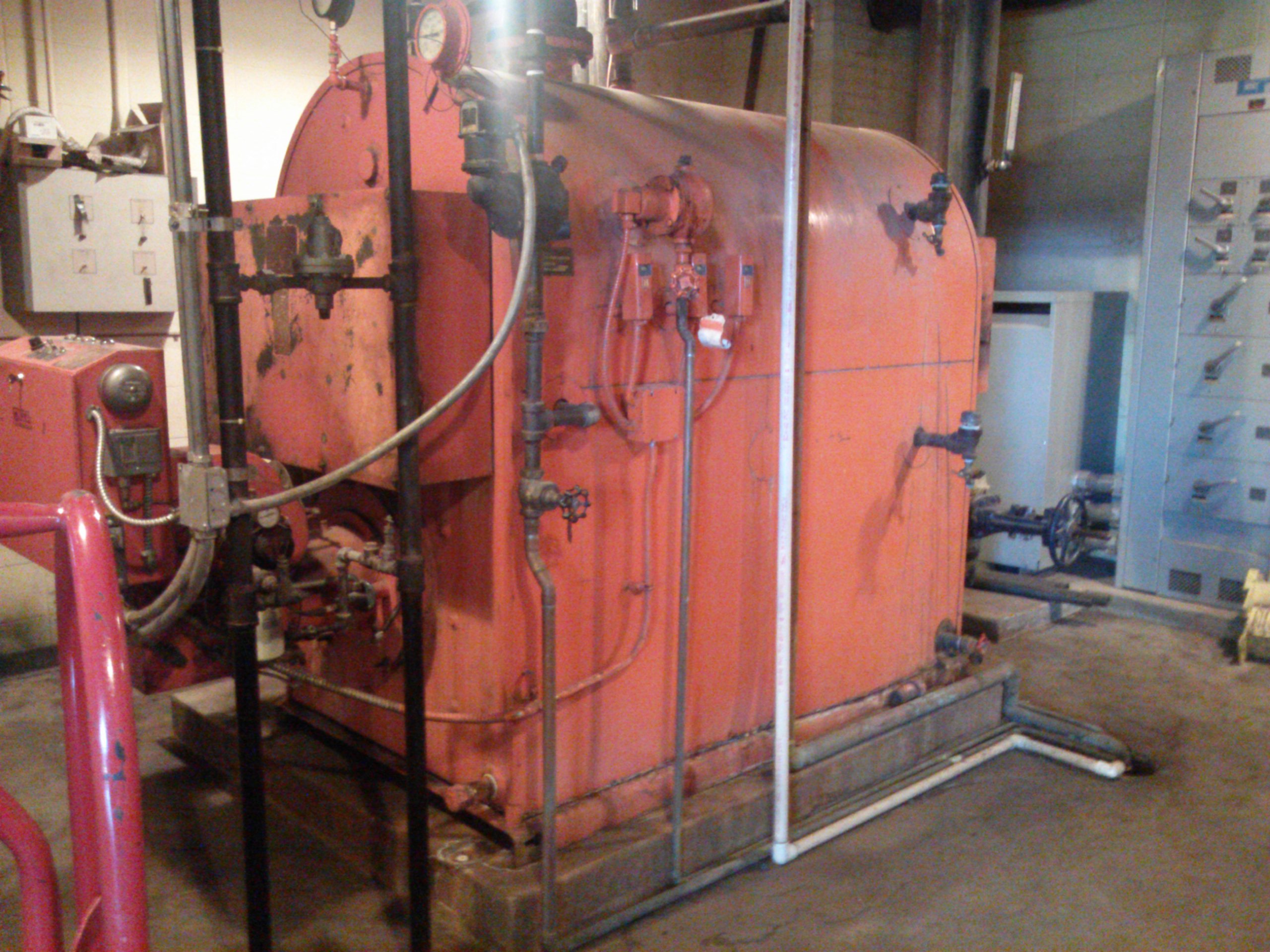
Above: The 1974 Kewanee Hot Water boiler, 25 BHP [December 12, 2013]
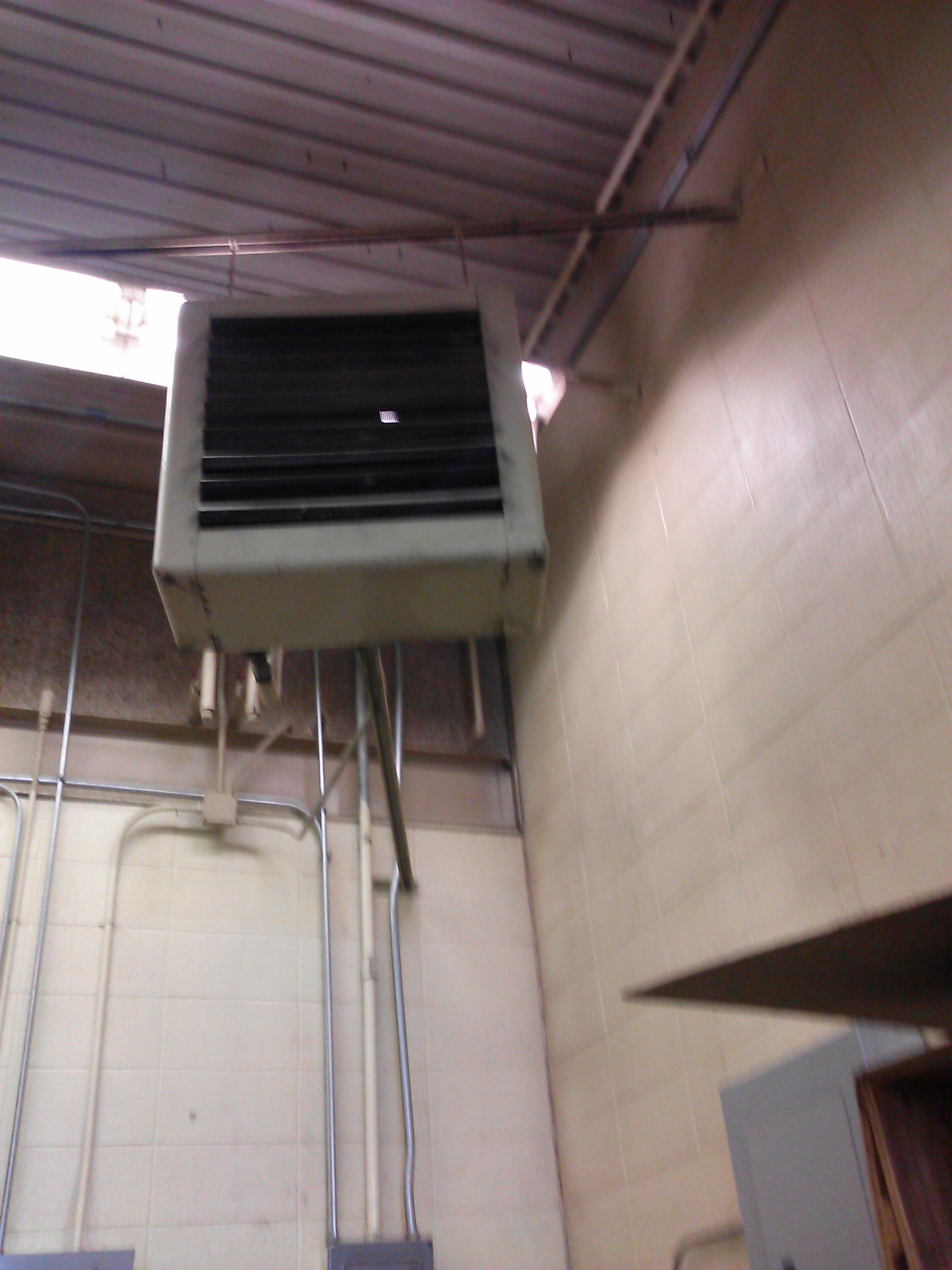
Above: Shop Area Fan Coil powered by the 1974 Kewanee Boiler. [February 10, 2014]
The photos above are dated with the year and month they were taken. We will add pictures to this page periodically. If you'd like to use any of the pictures found on this page, please e-mail me above. At the least, please cite me when using these pictures. :-)
As of April 2, 2017, this page is no longer being updated. Rather, it has been preserved for archive purposes. For additional information on these two boilers, as well as information regarding Kewanee Boiler, click here.